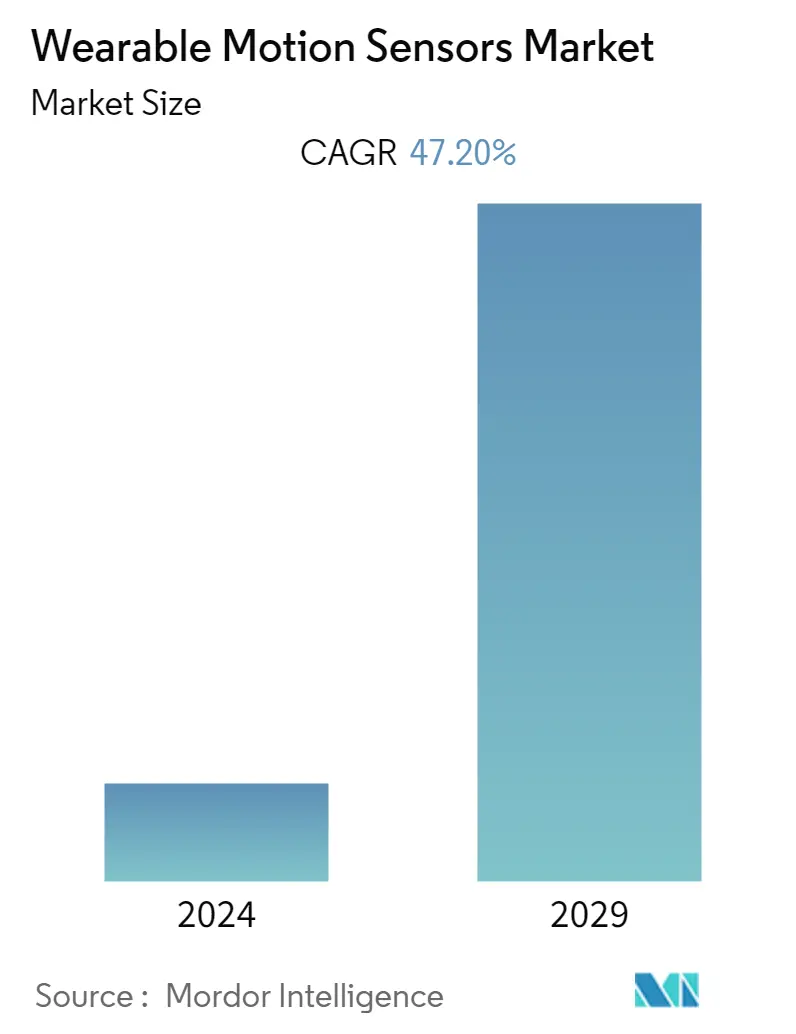Market Size of Wearable Motion Sensors Industry

| Study Period | 2019 - 2029 |
| Base Year For Estimation | 2023 |
| CAGR | 47.20 % |
| Fastest Growing Market | Asia Pacific |
| Largest Market | North America |
| Market Concentration | Low |
Major Players
*Disclaimer: Major Players sorted in no particular order |
Need a report that reflects how COVID-19 has impacted this market and its growth?
Wearable Motion Sensor Market Analysis
The Wearable Motion Sensors Market is expected to register a CAGR of 47.2% during the forecast period. Wearable products are expected to deliver valuable services to the owners to help drive a better lifestyle. Specifically, the wrist-worn wearable market requires OEMs to provide wellness and fitness-related services, a key reason the market traction for these devices is increasing quickly. Wearable devices with embedded motion sensors are used to enrich user experience in health and fitness by tracking an individual's physical activities, such as walking, running, and cycling.
- Motion sensors, such as gyroscopes, accelerometers, Microelectromechanical Systems (MEMS), and a combination of these sensors, are the most used type of wearables. Furthermore, health-tracking wearables always integrate motion and MEMS sensors but are not limited to and can also include health-specific sensors, like heart rate monitors, skin temperature sensors, and pulse monitors.
- The market for wearable motion sensors is being driven by the shrinking of sensors and related sensor components, increasing demand for sophisticated function sensors in wearable technology, advancements in battery size and efficiency.
- Due to consumers' increased interest in tracking real-time motion sensing activities, such as step counting and walking distance covered, sensors are an essential part of wearable devices used by consumers. The analysis of the generated data gives users specific results that can be used to define health and fitness goals.
- In particular, wearable motion sensors offer great potential for health-promoting interventions in the older population, patient care and research, and geriatric rehabilitation. Continuous health monitoring and integrated diagnostic devices worn on the body can help to identify and prevent early manifestations of age-related functional decline and disease.
- The COVID-19 pandemic positively impacted the wearable motion sensors market and highlighted the need to harness and leverage the digital infrastructure for remote patient monitoring. As current viral tests and vaccines are slow to emerge, there is a need for more robust disease detection and tracking of individual and population health, which wearable motion sensors could aid.
